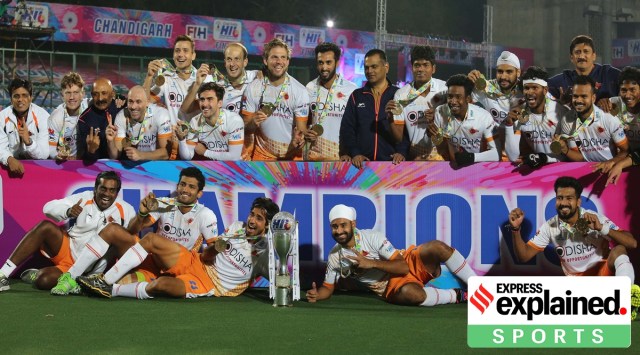Why the revival of Hockey India League is an important moment in the sport
Hubs such as Ranchi, Chandigarh, Chennai possible venues, 11-a-side format and simultaneous tournaments for women and men likely, with relaunch scheduled for next year

New teams, targeting hockey hubs and simultaneous tournaments for women and men: A decade after it was first launched, and six years after it was last held, the Hockey India League (HIL) is set to make a return.
In what is seen as the first step towards its revival, Hockey India on Monday announced a commercial partner, who will be tasked with finalising franchises along with other nitty gritty for the league, which was discontinued in 2017 because of the financial burden it put on the team owners, some of whom claimed to have incurred heavy losses.
While the number of teams for the men’s tournament isn’t yet finalised, it is learnt that there will be four teams for the women’s league, which will be held for the first time.
When will the HIL be held?
In its statement on Monday, Hockey India said it will announce “HIL schedule, format and host cities in due course.”
However, sources said it is likely the league will come back in 2024 after the Paris Olympics. In the past, the HIL was held mostly in January and February but given that Olympic qualification tournaments are set to be held in early 2024, the earliest available slot will be after the Olympics.
Hockey India is in talks with the International Hockey Federation to find a window that won’t coincide with other tournaments, including the European club season, so that it will be convenient for women and men players to travel to India.
Where will the franchises be based?
A Hockey India official said their aim is to take the league to centers where “hockey is loved and people will flock to the stadium”. “So we won’t necessarily look at cities like Mumbai or Delhi, where the response in the past has been poor. It could be places like Ranchi, Sector 42 Stadium in Chandigarh, and even Chennai, which has a rich hockey history,” the official added. Lucknow, which was one of the venues previously, is also being considered as one of the host cities.
What will be the format of the league?
While it is not yet officially announced, the HI official said the league will continue to be played in the 11-a-side format, dismissing the speculations that it could be a version of Hockey 5s.
5s is a short, crisp format of the game and is only 20 minutes long. With the FIH pushing the shorter format, Hockey India was earlier considering to revive the HIL as a 5s tournament as it would have been logistically and financially viable. “But our aim is to improve Indian players so that we continue to perform at a high level in the traditional format. So, the HIL will be an 11-a-side tournament,” the official said.
Why is the league’s revival seen as an important moment?
After India made an early exit from the World Cup on home soil earlier this year, legendary coach Ric Charlesworth was quick to point out one of the reasons for the debacle – the lack of a competitive league. More specifically, he said the HIL. “I think that really gave local players a boost,” he had said. “They played next to international players, and realised they only had two arms and two legs and that they could compete with them.” Charlesworth, who has seen Indian hockey from close quarters for more than a decade, was spot on.
The role of HIL in developing Indian players has been immense. Almost all players who were a part of the team that won the bronze medal at the Tokyo Olympics belong to the HIL generation. It didn’t matter that the competition lasted just for a month or so. As former captain Manpreet Singh once said, even a month of HIL helped him grow “several years” as a player.
In the post-Hockey India League generation, however, there has been a drop in the quality of players, who seem to be lacking an understanding of defensive structures, are unable to identify the opponent’s offensive patterns, inability to orchestrate running lines, have poor off-the-ball movements and, can’t cope with stress. This was visible during the Junior World Cup last year, where India – the defending champions – exited in the semifinals.
The Indian Express

